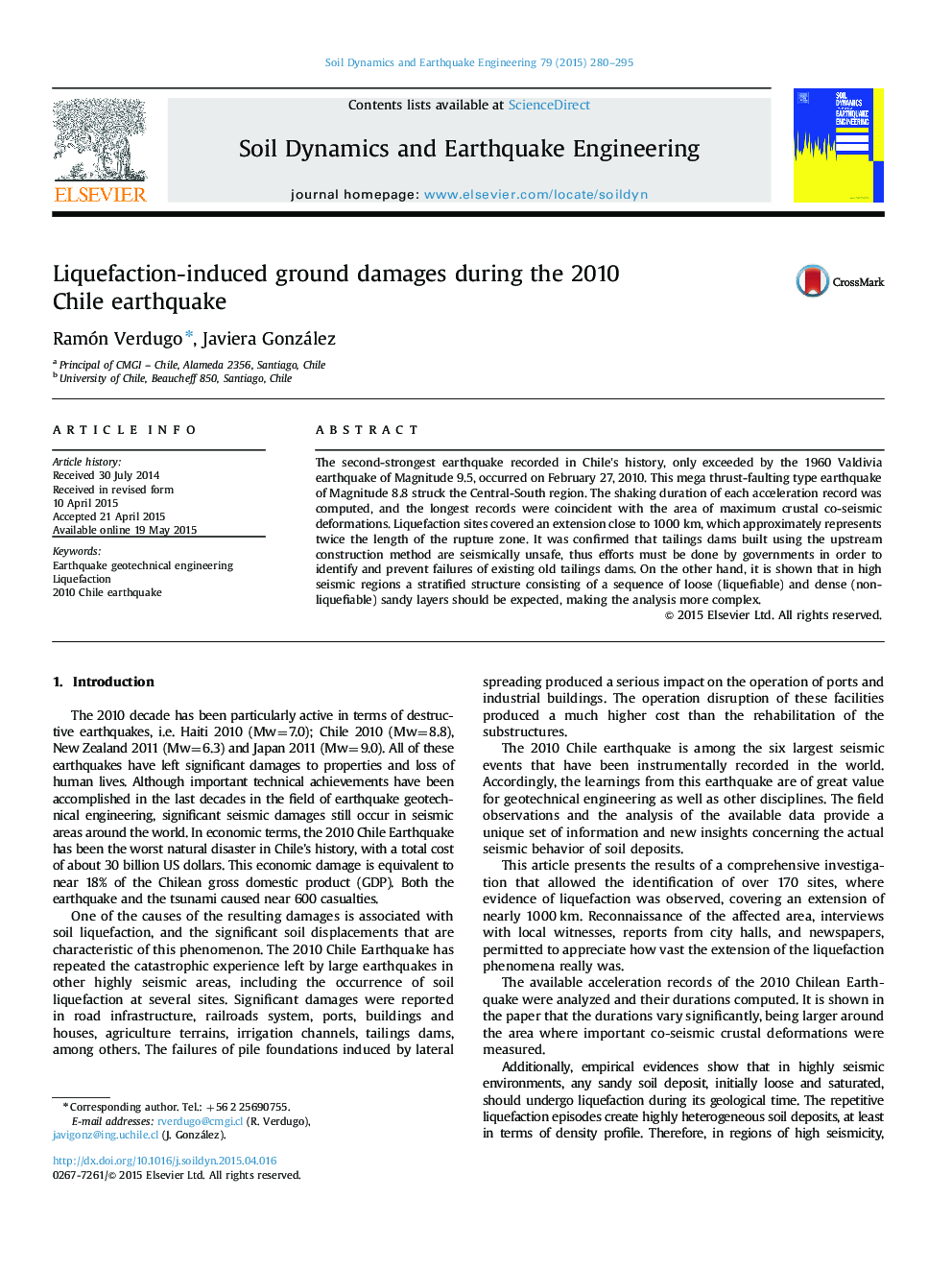| کد مقاله | کد نشریه | سال انتشار | مقاله انگلیسی | نسخه تمام متن |
|---|---|---|---|---|
| 303978 | 512767 | 2015 | 16 صفحه PDF | دانلود رایگان |
• The shaking duration computed varies with distance to maximum crustal deformations.
• Liquefaction sites extends near to 1000 km, which is twice the length of the rupture.
• The maximum settlement in natural horizontal ground is limited to 1.5 m.
• It is confirmed that tailings dams built using the upstream construction method are seismically unstable.
• High seismic regions present stratified sandy soils, since liquefaction must have occurred in the past.
The second-strongest earthquake recorded in Chile׳s history, only exceeded by the 1960 Valdivia earthquake of Magnitude 9.5, occurred on February 27, 2010. This mega thrust-faulting type earthquake of Magnitude 8.8 struck the Central-South region. The shaking duration of each acceleration record was computed, and the longest records were coincident with the area of maximum crustal co-seismic deformations. Liquefaction sites covered an extension close to 1000 km, which approximately represents twice the length of the rupture zone. It was confirmed that tailings dams built using the upstream construction method are seismically unsafe, thus efforts must be done by governments in order to identify and prevent failures of existing old tailings dams. On the other hand, it is shown that in high seismic regions a stratified structure consisting of a sequence of loose (liquefiable) and dense (non-liquefiable) sandy layers should be expected, making the analysis more complex.
Journal: Soil Dynamics and Earthquake Engineering - Volume 79, Part B, December 2015, Pages 280–295
